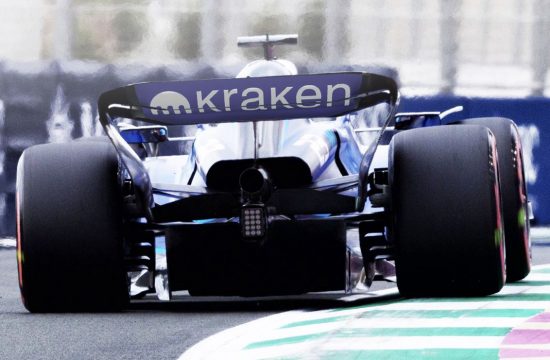- Fiat on- and off-ramps allow users to purchase crypto with fiat money and convert digital coins to national currencies. What role does this crypto-fiat bridge play in today’s crypto market?
Crypto used to be a self-contained industry, largely disconnected from the broader financial world back in the day. Fiat deposits were available only on the largest centralized exchanges and some wallets. Over the years, industry players realized that capital inflows from TradFi fuel the crypto economy — and conversely, the lack of crypto-fiat bridges slows down the digital asset market growth.
Fiat on- and off-ramps give users additional flexibility in managing their funds. They create a new revenue stream for the business: users deposit more money, trading volume grows, and TVL increases. This becomes especially relevant as millions from the traditional economy embrace crypto. Offering on-ramp services is essential for any platform that wants to expand and get closer to many newcomers.
- How commonly are on-ramps used? Besides crypto exchanges and wallets, what types of services find them most essential?
Fiat on-ramps are increasingly common across all crypto domains, including custodial and non-custodial platforms. Centralized exchanges pioneered the crypto-fiat bridge, and now it’s hard to imagine a CEX where you can’t buy crypto with a credit card.
Over time, these solutions began to appear in wallets as well. Many decentralized wallets, traditionally catering to Web3 users, like MetaMask and Trust Wallet, have implemented fiat on-ramps. Hardware wallets are following suit — this year, Paybis helped the Trezor cold wallet deploy a crypto-fiat bridge. In recent months, many Web3-native projects that had never dealt with fiat have also integrated on-ramps — for example, Uniswap Wallet and the Shiba Inu memecoin.
We see a growing interest in fiat bridges from DeFi platforms, dApps, Web3 gaming products, NFT marketplaces, and many other crypto projects. Also, many traditional institutions, like banks, fintech apps, and neobanks, are embracing crypto and building digital asset products. They, too, are taking advantage of the opportunity to easily deploy solutions that bridge fiat and cryptocurrencies.
- There are dozens of on-ramp solutions out there. What are the most frequent pain points people experience using them?
Building a decent on-ramp is a challenging task. Beyond the technical challenges, one must obtain licenses in as many jurisdictions as possible, making it difficult to build a quality bridge.
Some users face issues like high fees and long approval times. Particular on-ramps may not be available in some countries and offer limited payment options, negatively impacting conversion rates. Finally, users sometimes deal with complex onboarding and verification processes and have overall clunky user experiences. Those are some of the most frequent pain points — however, the on-ramp landscape is very diverse, and there are many quality solutions, too.
Some on-ramps offer a decent user experience but are challenging to integrate from a B2B perspective, which hinders their way to end users.
- How do you address these challenges at Paybis? What does a fiat on-ramp need to offer to stand out?
Simply eliminating (or at least minimizing) the drawbacks I just mentioned is already enough to offer a great fiat on-ramp. But here comes the tricky part — it’s not as easy as it sounds.
To ensure a high success rate and reasonable rates, the platform must provide numerous localized payment options tailored to specific countries. First, this requires obtaining licenses in dozens of regions, which costs millions of dollars and can take years. Second, partnerships with many payment gateways are necessary to expand available options.
At Paybis, we strive to work with as many payment solutions as possible to offer a fiat bridge that is viable worldwide. For example, users can buy crypto through Revolut, PayPal, or using the one-click Apple Pay solution. We’ve also enabled many more local options like AstroPay, M-Pesa, GrabPay, and PromptPay — over 40 in total. This allows us to maintain competitive rates in 190 countries, keep the industry’s lowest fees starting at 0.49%, and ensure an authorization rate of over 75% on credit card transactions, one of the highest success rates in the market.
Finally, on-ramps should offer customers something beyond their expectations. A decent service is expected as a given, so it’s great when you can add a pleasant and unexpected bonus. For example, we provide the option for payments up to $1,000 with simplified KYC, which significantly lowers the entry barrier and boosts conversion rates into paying customers for businesses.
- The simplified KYC flow sounds quite exceptional in relation to fiat operations. How do you make it possible from a technical and regulatory standpoint?
Many countries’ regulations allow small transactions to go without a rigorous KYC check. This simplifies the usual flow, enabling users to buy crypto with a bank card as quickly as any other online purchase. From a B2B perspective, this offering elevates products to a new level, radically simplifying user onboarding. It’s especially well-suited for non-custodial protocols where people often make smaller purchases.
KYC is necessary but often lengthy, which is one of its most frustrating aspects. At Paybis, we take our own approach to address this: we’ve implemented a framework that eliminates the need for KYC in 90% of first-time transactions. This allows users to purchase crypto in just 20 seconds, lowering the entry threshold and boosting conversion rates for businesses. Behind the scenes, Paybis performs a range of checks to ensure compliance with regulatory requirements.
- How long does it take to install a fiat on-ramp? Are there any tips to make this process faster and cheaper?
Total estimated time for a fiat on- and off-ramp integration is generally about two weeks. We recommend considering white-label solutions — ready-made software that is easy to integrate into any product under their brand. These solutions typically offer customization options, allowing businesses to adjust payment methods, regions, rates, etc. White-label providers have already done the development and licensing work, so they operate on a plug-and-play basis — businesses save time and money installing them.
- Broadly speaking, how can we make crypto more accessible to a broader range of people with little or no digital asset experience?
By simplifying things. Traditional crypto infrastructure appears sophisticated to newcomers, so platforms that make it easier to navigate stand out from the competition. Account abstraction is a good example — users can play blockchain games and interact with dApps without even knowing about private key management and gas fees. The more such examples emerge throughout the crypto industry, the faster we can bridge the traditional and digital economies.
About Innokenty Isers
Innokenty Isers is Founder and CEO of Paybis.com. Lifetime entrepreneur. 20+ years of various online businesses experience. Started numerous successful online businesses in advertising, in-game trading, finance, crypto industries.












